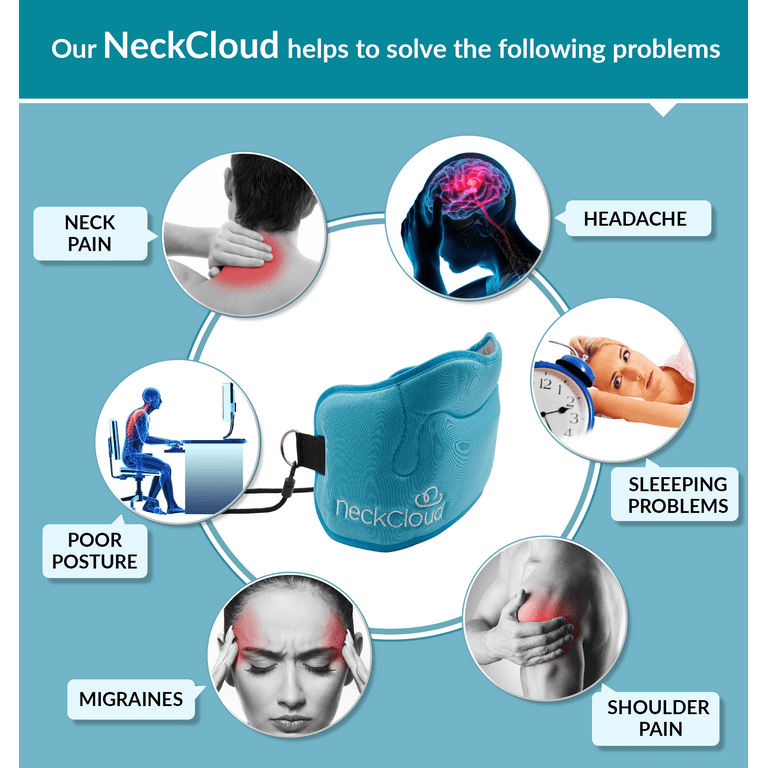Why the Neck Cloud is a Must-Have for Alleviating Neck Tension
Why the Neck Cloud is a Must-Have for Alleviating Neck Tension
Blog Article
Neck Pain in the Workplace: Determining Risk Aspects and Implementing Ergonomic Solutions
Neck discomfort in the workplace is a widespread issue that can influence employee well-being and efficiency. By recognizing the different risk aspects contributing to neck discomfort and applying ergonomic services, companies can create a much more helpful workplace. Recognizing these aspects is vital in establishing targeted approaches to ease pain and avoid future injuries. Resolving ergonomic issues not just improves employee health and wellness but also promotes general task contentment and efficiency.
Typical Reasons For Neck Pain
Neck pain in the workplace is a prevalent issue that can be credited to numerous usual reasons. One of the primary culprits is poor posture, which often results from long term durations of resting improperly at a desk or workstation. This can lead to stress on the neck muscular tissues and joints, triggering discomfort and pain. Additionally, repetitive motions such as frequent flexing, turning, or reaching can also contribute to neck discomfort gradually. Straining the neck by holding it in an uncomfortable position for extensive periods, like cradling the phone in between the ear and shoulder, can worsen the problem (neck cloud).

Ergonomic Threat Factors
Poor comfort designs in the workplace can significantly add to neck discomfort among employees. Aspects such as inappropriate desk elevation, insufficient chair assistance, and uncomfortable positioning of computer system monitors can all contribute in the development of neck pain. When staff members are required to rest for prolonged durations in settings that stress their neck muscles, it can cause stiffness, discomfort, and a lot more serious bone and joint issues with time.
Furthermore, poor ergonomic techniques can result in workers adopting uncomfortable postures while functioning, such as craning their necks to see a computer display or reaching annoyingly for a mouse or key-board. neck cloud. These abnormal placements and recurring motions can place excessive tension on the neck and bordering muscular tissues, leading to pain and reduced efficiency

Desk Configuration Recommendations
To decrease the threat of neck discomfort and pain, there are a number of desk setup recommendations that employees need to take into consideration. Make certain that the computer system screen is positioned at eye degree to protect against stressing the neck by looking up or down.
It is likewise important to have ample lights to minimize eye click here for more strain, as squinting or leaning onward can cause neck tension. Arrange the workdesk design to keep regularly utilized items within arm's reach, restricting the requirement for repeated twisting or getting to activities. By applying these workdesk setup recommendations, staff members can produce a more ergonomic work space that sustains neck health and lowers the danger of establishing job-related neck pain.
Stretching and Exercise Tips
Easy desk-friendly stretches can assist alleviate neck pain and stop stiffness. Neck rolls, shoulder shrugs, and see it here gentle side-to-side neck stretches are reliable in alleviating stress.
It is necessary to take time-outs throughout the day to execute these exercises. Establishing pointers or utilizing apps that trigger activity can assist develop a regular extending regimen. It is essential to pay attention to your body and avoid overstretching, particularly if you are new to these workouts. Consistency is key, so objective to integrate extending and workout right into your day-to-day job regimen. By focusing on these tasks, you can boost your physical health, lower the risk of neck pain, and enhance your overall productivity in the workplace.
Significance of Routine Breaks
In a hectic job setting where needs can add to physical stress like neck discomfort, developing a routine that highlights the value of routine breaks is extremely important (neck cloud). Taking regular breaks throughout the workday is vital for minimizing and stopping neck pain. Extended periods of resting or recurring jobs can lead to muscle mass tension and tightness in the neck and shoulders. By integrating time-outs right into the job regular, workers can decrease the get more risk of establishing neck pain and boost general comfort and performance.
These breaks can additionally serve as a possibility for staff members to practice relaxation techniques or gentle neck stretches, additionally advertising bone and joint wellness. Implementing a culture that values and prioritizes regular breaks can have a considerable effect on minimizing neck discomfort and boosting overall well-being in the workplace.
Conclusion
To conclude, attending to ergonomic threat variables and implementing proper workstation setups are vital in minimizing neck discomfort in the office. By advertising excellent stance, offering sufficient support, and encouraging regular breaks and stretches, organizations can create a healthier and much more efficient job setting for employees. Prioritizing staff member health via ergonomic solutions is key to avoid discomfort and improving overall workplace complete satisfaction.
Neck discomfort in the office is a prevalent concern that can influence staff member health and performance. By determining and attending to these typical causes of neck discomfort in the workplace, employers can take positive steps to produce a much more ergonomic and comfy job atmosphere for their workers.
Poor ergonomics in the workplace can significantly add to neck discomfort among workers. By carrying out these desk configuration referrals, workers can produce a more ergonomic work space that sustains neck health and wellness and reduces the risk of creating job-related neck pain.
Neck rolls, shoulder shrugs, and gentle side-to-side neck stretches are reliable in soothing tension.
Report this page